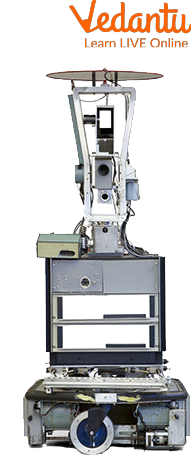




Introduction to Robots
Robotics is no longer simply a future concept; it now affects our day-to-day lives. Robotics has many applications in a range of industries, but it is also a fascinating and slashing teaching tool that is growing in importance as children engage in recreational activities that teach them a variety of new skills and concepts that will be very useful in the future.
The engineering discipline focuses on the entire procedure of designing, constructing, and deploying robots. Therefore, learning the principles of teaching robotics to kids in school can be quite beneficial. So let’s read further about them.
History of Robots
We have the answer here to ‘who made the first robot’. George C. Devol, a Louisville, Kentucky-based inventor, built the first robots as we understand them in the early 1950s. He created and received a patent for a manipulator that can be programmed, known as "Unimate" from "Universal Automation." He unsuccessfully tried to market his goods in the sector for the following ten years.
Businessman/engineer Joseph Engleberger was able to develop Devol's robot invention into an industrial robot in the late 1960s. He then founded a firm named Unimation to manufacture and sell robots. Engleberger is referred to as "the King of Robotics" in the business because of his efforts and accomplishments.
New robot development has advanced greatly in academia as well. Charles Rosen oversaw the creation of the "Shakey" robot in 1958 at the Stanford Research Institute. Shakey was much more sophisticated than the original Unimate, which was made for specific industrial uses. Shakey could travel around the room on a wheel, see the action with his television "eyes," navigate strange terrain, and to some extent, react to his surroundings. His shaky and clattering motions led to the naming of him.

Creation of the "Shakey" Robot
Who Invented Robots?
In 1948, British robotics pioneer William Grey Walter created the Elmer and Elsie robots, which mimic real behaviour using simple electronics. They were tortoise-shaped robots trained to locate their recharge stations as soon as their batteries began to dwindle.
The Unimate was the first digitally controlled and programmable robot, created by George Devol in 1954. Devol and his business partner Joseph Engelberger founded the first robot corporation in the world in 1956. In a General Motors car facility in New Jersey, Unimate, the first industrial robot, went online in 1961.
Robotics Origin
When you hear the word "robot," many different images come to mind, including robots from Star Wars, devices that resemble people and exist only to serve their creators, and even the Mars Pathfinder mission's Rover Sojourner, which travelled across Mars. Robots may also be seen as risky technological innovations that will eventually lead to the extinction of the human race by either outplaying or outpacing us and conquering the globe or by making us wholly reliant on technology, causing us to passively sit by and programme robots to perform all of our work.
In reality, a drama about mechanical men who are created to work on assembly lines in factories and who revolt against their new masters is where the term "robot" first appeared.

Robots
History of Humanoid Robots
Friedrich Kaufmann of Dresden, Germany, created the first humanoid robot in 1810, which was a soldier holding a trumpet. At the very least, the robot was on show till April 30, 1950.
One of the first humanoid robots was displayed in 1928 at the Model Engineers Society's annual exhibition in London. The robot, called Eric, was created by W. H. Richards and was made up of an aluminium suit of armour with 11 electromagnets and one motor that were each powered by a 12-volt battery. The robot could move its arms and head, and it was a voice- and remote-controllable.
Summary
In this article, we learned that a robot is an automatically operated device that reduces labour demands, even if it doesn't necessarily look or act like a person. The expression is a reference to Karel Apek's play R.U.R. (1920). Since the 1960s, tremendous microelectronics and computer technology advancements have contributed to considerable advancements in robotics.
We also learned that automobile and aeroplane assembly plants use modern, high-performance robots, while electronics companies sort or test finished goods using robotic devices in conjunction with other computerised tools. Let’s sum up the article with this information about robotics. We have already discussed the history of robotics in the article; for a detailed history, you can refer to the history of robotics PDF. We hope this article was beneficial for you.
FAQs on History of Robot
1. Who is the Father of robotics?
In addition to being regarded as the "father of robotics," Al-Jazari also recorded 50 mechanical inventions.
2. What is the name of a female robot?
Gynoids are gendered feminine humanoid robots. They frequently show up in science fiction movies and artwork.
3. What AI is closest to a human being?
Sophia, the most advanced humanoid robot from Hanson Robotics, personifies our hopes for the potential of AI.









